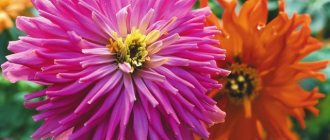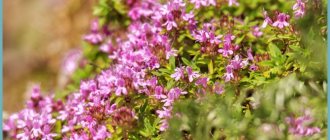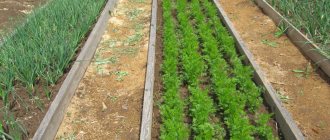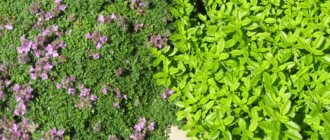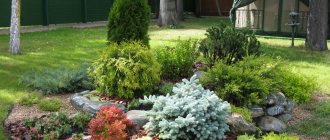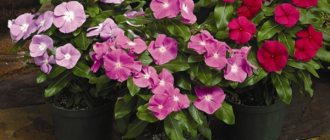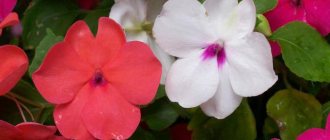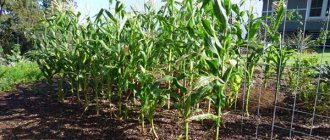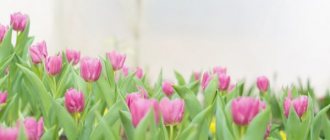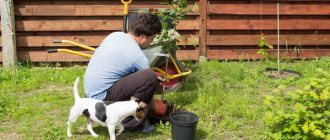Rudbeckia is a flowering plant native to North America. It belongs to the herbaceous representatives of the botanical world; it can be grown as an annual, biennial, and also as a perennial plant. Rudbeckia has quite a lot of varieties and species, so any gardener will be able to choose the most attractive one.
But growing rudbeckia will not leave you any trouble: the plant is unpretentious and does not require too much care. In this article we will take a closer look at this flower: we will find out its most popular types, find out how to plant rudbeckia and how to care for it.
Features of the flower
All types of rudbeckia came from North America. They are attractive and charming. But not everyone is able to survive in the climatic conditions of the middle zone.
A notable feature of rudbeckia is the bright color of the inflorescences. The flower baskets are yellow in color with marginal reed petals.
There are tubular florets in the middle that create a darkened center. The color of the plant depends on the species. So you can find not only bright yellow, but also pink, lilac, purple inflorescences.
Rudbeckia blooms late. But the inflorescences are numerous, up to 15 cm in diameter. The stem is up to 90 cm in height, and some varieties grow up to 2-3 m. The biological features of the plant include:
- shoots are branched, simple;
- leaf blades: pinnately divided or pinnately dissected. The shape is oval or ovoid;
- leaf length: 5-20 cm;
- shoots: upper – sessile, lower – long-petiolate.
Rudbeckia has bisexual flowers. The fruits are oblong-shaped seeds. Often the achenes have a small crown. With proper collection and storage, seed germination reaches 3 years.
Description and types
Rudbeckia is a guest from distant countries, which has already successfully adapted to our climatic conditions. It received its name in honor of the Rudbeck family from Switzerland: the family was engaged in botany and made a significant contribution to the development of this science.
The plant, like annual Chrysanthemums, blooms wonderfully and reaches a height of 30 cm to a meter. Widely used in landscape design, unpretentious, and at the same time very decorative.
The flowers are distinguished by their colorful, bright colors and are quite large: the diameter of a standard flower is 10-15 cm. Moreover, they are collected in inflorescences, further enhancing the overall decorative impression.
In the video - growing Rudbeckia:
The color of the petals is most often as follows:
- yellow-golden;
- brown;
- uniform yellow;
- reddish brown;
- orange-yellow.
Other options, more rare, are also possible.
All the pros and cons of application in landscape design
Tall varieties of rudbeckia are often used as living fences and decorative fencing. In the private sector, flowers delimit zones on a plot of land.
Experienced gardeners use tall plants to hide unattractive outbuildings, and some plant rudbeckias to decorate children's playgrounds and gazebos. Only use medium-sized or low-growing varieties.
Rudbeckias are suitable for decorating balconies and terraces. Can be planted in flowerpots. Combination recommended with:
- echinacea and garden chamomile;
- chrysanthemums of all kinds;
- cereal crops;
- Astra and Monarda.
Designers say that it is better to choose a rustic style for rudbeckia. At the same time, use different colors of the plant, using the “ladder” method: tall varieties are in the back, and short ones are put in the foreground.
Of the minuses, only one fact stands out: most of the varieties are not able to survive in the conditions of the middle zone in winter. Therefore, every year you will have to replant the living decor.
When to sow rudbeckia seeds for seedlings
Any person who decides to grow this or that vegetable or flower crop, before starting the business, will ask - when to plant seeds for seedlings, in what month? And the question is really important and relevant, because planting time plays an important role in the successful development of plants. So, the optimal time for sowing rudbeckia seeds is from the end of March to mid-April .
In different regions, planting time may differ slightly: for example, in the South, rudbeckia can be sown already in mid-March, in the Middle Zone (including the Moscow region) - it is optimal to plant in early April, in Siberia, the Urals, and the Leningrad region - it is better plant in mid-April.
You can also choose the timing of planting rudbeckia seedlings according to the 2021 Lunar calendar:
- Favorable days: in January: 1, 2, 10, 11, 15, 16, 19, 20, 27, 29;
- in February: 17, 18, 22, 23, 24;
- in March: 1, 3, 4, 20, 21, 29, 30;
- in April: 9, 10, 15, 16, 17.
- Unfavorable days: in January: 12, 21, 22, 28;
- in February: 11, 27;
- in March: 12, 28;
- in April: 11, 26.
How to grow healthy and strong seedlings at home
There are many varieties of rudbeckia, but the growing conditions for all are not particularly different if you use the seedling method. To do this, you only need to complete your knowledge of choosing a container and soil. Also follow the basic rules of care, as with other crops, the seedlings of which are needed to decorate the garden/vegetable garden or balcony/facade.
Choosing a container for planting
The crop has no special requirements for choosing a container. It can develop in pots, boxes, containers, and plastic cups. The main condition: thoroughly process the selected container before planting.
A standard manganese solution (weak light pink) is suitable as a disinfectant liquid. If the seed is planted in peat tablets or pots, it is enough to keep them in a hot oven for 3-5 minutes.
Diseases and pests
In general, the plant is little susceptible to diseases and damage from harmful insects. Occasionally, rudbeckia may suffer from powdery mildew: the disease will manifest itself as a peculiar grayish-white coating on the leaves. In this case, the flower is treated by spraying with copper sulfate or a solution of colloidal sulfur.
In the video - flower pests:
Rudbeckia can also be affected by leaf nematodes. In this case, the disease will manifest itself as characteristic brownish spots on the leaves, which lead to their gradual withering. They fight the disease with insecticides, sometimes even requiring complete removal of the affected plant followed by burning.
How to care for crops
During the first days, the air temperature for the sown seeds should not exceed 22 degrees. The optimal option is 18-20.
Keep containers with rudbeckia in a shaded place. With the appearance of the first shoots, seedling care should be consistent.
Temperature, lighting and humidity
Period of appearance of the first shoots: 1-2 weeks. We move the container with seedlings to a well-lit place. The temperature remains the same: 20-22 degrees. Rudbeckias are ventilated daily (the covering material is removed). When 3 leaves appear, the greenhouse is removed.
In spring, daylight hours increase, but lighting will still be needed, since seedlings must be illuminated for at least 14 hours a day. A phytolamp is used.
After removing the cover, the temperature drops to 16 degrees.
Watering and fertilizing
Application of fertilizer mixtures at the stage of seedling development at home is not required. Watering is carried out as necessary, but over-watering is not recommended. High humidity will lead to blackleg and other fungal infections.
Advantages and disadvantages of perennial rudbeckia
Benefits of Rudbeckia:
- Undemanding to growing conditions.
- Abundant flowering.
- Variety of species and varieties.
- Suitable for landscape compositions and garden design.
- Long flowering - about two months.
Disadvantages of Rudbeckia:
- Some flower lovers are not happy with the appearance of rudbeckia.
- Flowers are not intended for cutting. The main purpose is to decorate the landscape. Only terry varieties are used in floristry.
- Unrooted seedlings are afraid of frost - shelter is required.
Picking seedlings and planting in open ground
Seedlings are transplanted into separate containers after the sprouts have been strengthened. There is no point in postponing the pick. Otherwise, the roots will get tangled together.
For replanting you will need soil mixture, plastic cups or peat tablets/pots. Drainage holes are required.
Hardening of young animals
Habituation of seedlings - hardening - begins from the moment the first sprouts appear. To do this, remove the greenhouse for 5-30 minutes. The time increases gradually until the cover is completely removed. Before transplanting into open ground, young animals are taken out into fresh air for 2-4 hours.
Site selection and preparation
The area for planting rudbeckia should be well lit, without shadow. Draft and wind in the landing area are also not recommended. 2 weeks before transplanting the seedlings, the soil in its permanent place is fertilized, watered, and treated (acidity is reduced, drained).
Seating schemes and selection of neighboring crops
Transplanting rudbeckia requires compliance with the following rules:
- Seedlings can be planted in moist soil. To do this, the planting hole is watered with settled water for 2-3 hours;
- The holes are made larger in diameter than the container with seedlings. The distance between flowers is at least 30 cm;
- seedlings are transplanted by transshipment or carefully removed without disturbing the earthen coma;
- Sprinkle with soil and water generously.
Mulching is recommended as the last step to improve rooting, growth and development.
Popular varieties of perennial rudbeckia for growing in the garden
Inspired by the endurance and long flowering of rudbeckia, breeders have developed dozens of new varieties. They, although different in appearance, inherited the main advantages of the genus - height, power, brightness of inflorescences and lush, long-lasting flowering.
All types of rudbeckia bloom from mid-summer until the beginning of autumn frosts.
Rudbeckia is distinguished by species and varieties. The most famous species among gardeners are:
- enveloping;
- dissected;
- hairy;
- glossy;
- shiny.
Each species has dozens of varieties.
Golden ball
A very common variety. If few people know the name “rudbeckia,” then not only flower growers, but also ordinary summer residents are well acquainted with the “golden ball”. This variety has large spherical flowers, reaching 12 cm in diameter.
During the flowering period, the plant is abundantly strewn with yellow “balls”. The leaves are not large, pinnately dissected. Blooms from July until frost. To prevent long shoots with heavy inflorescences from falling to the ground, they are tied to a support.
Terry
Terry varieties of rudbeckia have one thing in common - luxurious inflorescences decorated with feather-shaped bracts. They bloom profusely until frost. Popular with florists - these varieties are used for making bouquets and flower arrangements.
There are many terry varieties of rudbeckia, let us note two among them:
- Moroccan Sun. “Fluffy” flowers of yellow shades. The flowers resemble chrysanthemums in appearance. Plant height – up to 50 cm.
- Maya. A plant with densely double spherical flowers of bright yellow color. The diameter of the inflorescences reaches 10-12 cm. The height of the plant is 45 cm.
Amber
Plant height is about 60 cm. The stem is pubescent. The inflorescences are large, its reed petals are golden-yellow, and the tubular petals collected in the center are brown-purple. The diameter of the inflorescences reaches 10 cm.
Blooms from mid-July to mid-September. The variety withstands droughts and significant temperature drops. Prefers open sunny areas. Actively used in landscape design.
Beautiful
It grows up to 60 cm in height. The flowers consist of yellow-orange lingual petals and a black-brown center, collected from tubular flowers. The petals on the bend have three teeth.
The diameter of the inflorescence is 10 cm. The stem is strong, the leaves are oblong-rounded. Flowering begins in July and lasts about two months. The variety is resistant to cold, diseases and pests.
Purple
The height of the plant reaches 90 cm. The shape of the flower resembles a chamomile with dirty pink petals and a brown core. Purple rudbeckia is popularly called echinacea.
The variety is one of the most popular among rudbeckias. The plant is very light-loving and frost-resistant. It has a pleasant aroma and an unusual petal color for the plant in question.
Further care
Rudbeckia, regardless of the variety and type, is an unpretentious plant. At the same time, watering, removing weeds and loosening are standard for the care of all plants.
Fertilizer
It is better to feed the flower with complex mineral fertilizers. Time of implementation: after planting, budding, before wintering (phosphorus-potassium mixtures are added).
Weeding
Regular removal of weeds increases the chances of successful development of rudbeckia without infection with fungal spores. Loosening and watering are carried out immediately.
Reproduction
The collection of seed material is carried out in the fall when the inflorescences wither. The exception is hybrid varieties, since they do not transmit varietal characteristics.
Wintering
At the first frost, the gardener needs to think about perennial rudbeckia. For a safe winter sleep, pruning is carried out almost to the root.
To provide warmth, an additional measure will be required - mulching with peat in a layer of up to 5-7 cm.
Features of caring for perennial rudbeckia
Rudbeckia is one of the most undemanding and hardy flowers. If favorable conditions are created, it will require minimal care.
Watering
The plant is moisture-loving, so it needs to be watered regularly during the summer. Features of watering rudbeckia:
- In spring and autumn, watering is not needed.
- Watering is especially important at the beginning of the growing season and in the first year of life.
- Adult bushes need water during drought periods. If the soil is well fertilized, rudbeckia safely survives dry periods.
- After watering, the soil is loosened, providing air flow to the roots.
In conditions of moisture deficiency, rudbeckia stops flowering earlier than expected.
Top dressing
Rudbeckia is fed several times per season:
- In the spring. Fertilizers are applied approximately 2 weeks after planting the seedlings in the ground. A complex fertilizer is suitable, for example, nitrophoska - dissolve 1 tbsp in a bucket of water. l. You can also water the plant with diluted mullein, herbal infusion or ash solution.
- During the budding period. Add nitrophoska or potassium sulfate.
- In autumn. Phosphorus-potassium fertilizers are needed - they will help rudbeckia to survive the winter safely.
Trimming
There are several types of rudbeckia pruning:
- Rejuvenating. The plant is periodically inspected during flowering. The stems on which the flowers have faded are cut down to 1 green leaf. This pruning allows you to maintain the decorative appearance of the bush and prolongs its flowering.
- Thinning. It is carried out when the bush is too thick - it interferes with normal flowering. The stems are removed at the root. Such pruning leads to the appearance of new growth.
- Pre-winter. Conducted in the fall, after flowering. The stems are cut at the root. This type of pruning is not necessary. You can remove the stems in the spring - this will not affect the condition of the underground part of the plant.
Care after flowering
Caring for faded plants involves removing the above-ground parts of the plants. If traces of any disease are found on them, then all cut stems must be burned. Under no circumstances should affected plants be put into compost.
Collecting seeds
Rudbeckia seeds are collected in the fall, after the plant has finished flowering. Features of the collection:
- The inflorescences must be completely dry.
- Wearing gloves, the seeds are collected from the central part of the inflorescence.
- The seeds are scattered on a sheet of paper and dried a little in a well-ventilated area.
- Store planting material in paper bags.
Transfer to a new place
If rudbeckia grows in one place for more than 5 years, it sprouts shoots that clog the area. To prevent this from happening, the plant must be replanted in time.
Features of rudbeckia transplantation:
- The plant is replanted in early spring or after flowering.
- The bush is dug up and divided into parts. Thus, the plant is not only replanted, but also the number of bushes is increased.
- Intervals are maintained between transplanted plants in accordance with the variety. The taller and bushier the plant, the larger the gaps should be. The average distance between bushes is 70 cm.
Preparing for winter
Most types of perennial rudbeckia tolerate winter well. Plants can withstand frosts down to minus 20 °C, and even more under snow cover.
How to prepare rudbeckia for winter:
- Cut off the above-ground part.
- Cover with a layer of mulch - peat, humus, spruce branches, dry grass or foliage. The thickness of the cover is about 8 cm.
If the frosts are not severe, the plant will survive the winter without shelter. But if the winter is not snowy, and frosts strike unexpectedly, the perennial may freeze.
Reproduction methods
Rudbeckia is propagated in two ways:
- Seeds. Every gardener can collect them after the plants have flowered. Annuals are usually propagated by seeds. They are also used for growing seedlings - then flowering can be achieved in the current year.
- By division. Perennial rudbeckia is propagated when it reaches three years and forms a powerful root system. The bush is dug up, its rhizome is removed, and divided into two parts. If the bush is large, it can be divided into 3-4 parts. This procedure is carried out in August. Plants are planted separately.
All types and varieties of rudbeckia can be propagated by seeds, except terry ones.
Protection from diseases and pests
Rudbeckia is resistant to most diseases and is little affected by pests, but under unfavorable conditions pathologies may appear.
The main diseases and pests of rudbeckia, measures to combat them are presented in the following table:
| Diseases/pests | Symptoms/signs of damage | How to fight? |
| Powdery mildew | Whitish spots resembling mold appear on the leaves. | Spray with a solution of colloidal sulfur 1%, copper sulfate (per 10 l - 80 g), Bordeaux mixture. |
| Leaf nematode | First, dark spots appear on the leaves, which eventually become necrotic. The plant withers and dies. | Remove and burn all affected parts. Spray with insecticides - Nemafos, Nemagon, etc. |
Rudbeckia can be affected by caterpillars, thrips, and spider mites. It is important to notice the danger in time and take appropriate measures - spray with a suitable insecticide.
Growing conditions
To grow this variety of rudbeckia, you should choose open sunny places. Even in light partial shade, plants stretch out greatly. Almost any soil is suitable for growing. But this crop grows and develops best on light, moderately moist loam.
If the place for planting rudbeckia was chosen correctly, then it blooms profusely without interruption all summer until frost.
Caring for this variety of rudbeckia is not at all difficult. The most important thing is to carry out basic care activities on time.
Watering
Rudbeckia is a fairly moisture-loving plant, but can tolerate short-term drought quite easily. It usually requires the greatest amount of moisture at the time of intensive spring regrowth. If at this time the plant does not gain green mass, then there will be no abundant flowering.
Feeding
Flowering with good feeding (photo)
This crop does not need fertilizing, but on poor soils, fertilizers can be applied to improve flowering.
To do this, you can use various complexes of organomineral fertilizers intended for flowering plants. Only two feedings per season will be enough.
The first is carried out at the time of spring regrowth, the second before the buds are laid.
Trimming
When caring for rudbeckia, you must not forget about timely pruning of faded inflorescences. This event allows you to extend the flowering period and significantly improve the decorative qualities of the plant.
Reproduction
The easiest way to propagate this flower is by sowing seeds. You can purchase them in specialized gardening stores. The optimal time for sowing seeds for seedlings is the end of March - beginning of April.
To do this, prepare seed containers with loose and fertile soil. The seeds are carefully laid out on the surface of the soil and pressed slightly. You can sprinkle a little soil on top of them. At a temperature of 18-20°C, seedlings appear after 2 weeks.
After a pair of true leaves grow on the seedlings, you can start picking them into separate containers. Planting seedlings outdoors begins after the onset of stable warm weather. In most regions of Russia this is the second half of May.
When planting, an interval of 40 cm should be maintained between plants. This distance allows young bushes to develop normally and bloom profusely.
The described plant can also be propagated by dividing overgrown bushes. Such propagation can be carried out throughout the growing season. But plants that are divided in early spring take root best.
The best varieties of annuals
Annual rudbeckia is grown from seeds that need to be sown as seedlings in March to get flowers in June. But such plants bloom until the first autumn frosts, and then die.
The compact bush (35-45 centimeters high) is strewn with large, densely double flowers. The diameter of the inflorescence-basket is 9-12 centimeters. The color of the petals is deep yellow. The flowers resemble a ball, inside of which a small brown center is visible.
Gloriosa
Annual with large yellow-burgundy flowers. The middle is shiny, slightly convex, burgundy-brown. The stems are straight, powerful, the leaves are oblong, small, greenish, densely pubescent.
Hybrid
A bright annual with an erect, pubescent stem. Reminds me of chamomile. True, the petals are colored coffee-red, and they are yellow at the ends. The middle is burgundy-brown, slightly convex.
Moreno
The variety is obtained on the basis of hairy rudbeckia. Annual plant up to 0.75 meters high. The inflorescence-basket has central (burgundy) tubular and middle (red-brown with yellow edge) reed flowers. The inflorescences of this annual can be simple or double.
Toto Rustic
An annual plant obtained from the hairy rudbeckia. The height of this crop is 30-40 centimeters. The basket inflorescences look like a flash of flame: the edges have red-yellow petals, and the center of the flower is brown. Used to decorate flower beds, mixborders, in group compositions, next to plants of contrasting colors. Rudbeckia is often planted along the fence, near the house, near the border.
“>
- Author: Maria Sukhorukikh
Rate this article:
- 5
- 4
- 3
- 2
- 1
(0 votes, average: 0 out of 5)
Share with your friends!
Application
In landscape design, rudbeckia is used by gardeners willingly and quite widely. So, a plant can:
- decorate flower beds;
- serve as a frame for fences and hedges;
- shade buildings;
- serve as a border for garden paths and sidewalks.
Other uses of rudbeckia are also possible: each land owner decides this issue at his own discretion. It is also important to take into account the size of the plant, since some varieties of rudbeckia can be quite tall. It is important to ensure that adult flowers do not block other decorative plantings.
Rudbeckia looks very beautiful and harmonious in company with asters and chrysanthemums. And the combination with purple echinacea is striking in its unusualness. In addition, in group plantings, the beauty of rudbeckia is well highlighted:
- marigold;
- monarda;
- calendula;
- nivberry and other low-growing background plants.
We looked at the features of growing rudbeckia from seeds. As you can see, the plant is very decorative, and at the same time unpretentious. These are two good reasons to grow rudbeckia in your own garden, using the tips from our article.
The original rudbeckia appeared on our market not so long ago. In this article we will look at the most spectacular varieties of rudbeckia and the features of their cultivation.

